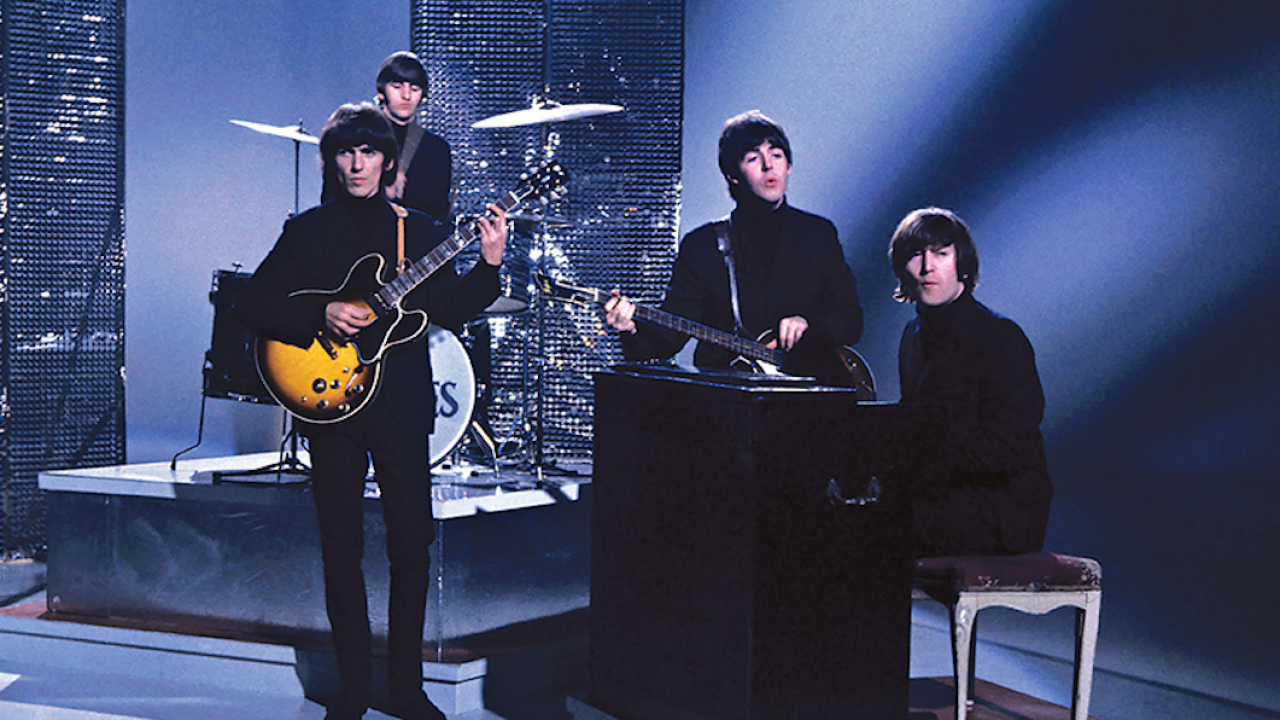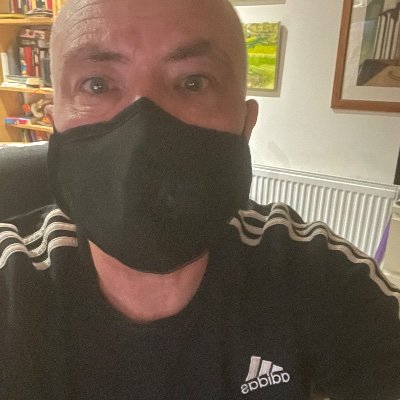You wonder when the overwhelming domination of The Beatles over pop culture will eventually subside, if a generation steeped in the hip-hop and the grimestep and so forth they have nowadays will turn on their Granddad’s generation and tell them up which of their desiccated orifices they can shove their Yellow Submarines.
Maybe, but far more likely is that over any decades and centuries to come, The Beatles will only intensify as a cultural force, as pretty much all else is reduced to dust and air. Painstaking restoration jobs like this will be part of that process.
A team including Giles Martin, son of George, has, frame by frame, colour graded and digitally enhanced the original scratchy, faded footage of these videos, as well as boosting their sound quality, now that the basic panning effects of early stereo no longer sound quite so with it.
The collection covers every single Beatles No.1, tracking their career as it panned out before the British public, before whom they grew from fresh-faced to garden gnome-hairy. It also includes a bonus disc featuring B-sides and other tracks which, while not hitting the top spot, play a key role in The Beatles’ visual narrative.
This collection is topped and tailed by the unpromising Love Me Do and the melancholy, fatigued The Long And Winding Road, but in-between is a near-faultless body of music that still speaks to us intimately and directly to this day – its freshness, its warmth, the unerring ability of both Lennon and McCartney to pinpoint the correct sentiments and hit exactly the right chords and notes in order to convey them with maximum directness, simplicity and impact.
Every single here, every No.1, feels like a bullseye. All their contemporaries or successors could ever do was pepper around the mark they made so early. All You Need Is Love, they sang, and the recording of that satellite appearance features here (the colourised version, released for the Anthology series in 1995), with members of the Rolling Stones in particular looking unconvinced, perhaps rightly so – they knew you needed a lot more than love, which in any case is in short supply. But love is a quality that shines in various ways in The Beatles: love of life, love of each other, love of their art and, for a while, of being who they are and where they are at, a love never expressed in pop better than by the Fab Four.
The songs are familiar and evergreen enough, though the videos selected here are not always so, such as the less frequently seen clip of Help! filmed at Twickenham Studios in 1965, or a 1970 promotional clip used for Let It Be, which differs from the accompanying film used in the movie of the same name.
A copious booklet explains the background and circumstances to each of these films, their locations and attached stories, and it’s a trove of information for Beatlemaniacs.
To see these clips in sequence is illuminating at a deeper level, however, in terms of The Beatles’ relationship with public performance, which was actually an odd one. They were exiled, albeit voluntarily to a degree, from the 1950s live experience. Born before there were was quite such a thing as counterculture, when pop was treated as an adjunct of showbiz, they presented live to the world in TV studios, or old-style Gaumont theatres and halls.
When they played to a mass audience, it was in the exasperating context of Shea Stadium or the Hollywood Bowl, to thousands upon thousands of teens more interested in experiencing the ear-splitting euphoria of Beatlemania than actually attending to what the four distant, booted, English guys were actually playing. They never enjoyed the experience of playing in the festival era, to vast but tuned in and attentive audiences.
Instead, their video appearances often involved some measure of artifice, which they either openly mocked or used to artful effect, or both. Take I Feel Fine, in which they deliberately highlight the farcical aspects of lip-syncing, with Ringo pedalling furiously away on a cycling machine rather than playing a drum kit, or George singing/playing into a punchbag; a mere spectacle of physical effort. On We Can Work It Out, John Lennon spends most of the video trying, successfully, to get Paul to corpse with his gurning antics at the keyboard as his songwriting partner tries to keep up the doe-eyed miming pretence.
On Rain, in 1966, the group have reached a zenith – not yet in full-blown psychedelic mode but looking like they’re anticipating 1996, especially Lennon in his coloured shades, while all around them, George Martin included, look like they’re still in roughly 1956. It’s filmed in Chiswick Park in West London, and features Lennon sarcastically miming the backward taped vocals at the end of the song. This is the track Oasis channelled for their entire, precipitous career.
Eleanor Rigby is represented by a clip from the Yellow Submarine movie, whose animation, while being rather more poignant, anticipates that of Monty Python’s Terry Gilliam. Strawberry Fields Forever (The Beatles’ strangest, perhaps finest moment, denied the No.1 spot) has been especially well restored. Directed by Peter Goldmann and filmed at Knole Park in Kent, it’s a prototype for the video era, a tremendous transcription of the song’s slow, dreamlike, acid paintstream of consciousness.
Penny Lane is a slightly dafter affair, with the four Beatles mounting horses, an activity to which, as both Paul and Ringo confirm in audio commentaries, they were painfully unaccustomed.
By the later years, you sense that it’s not just the banality of showbiz pretence The Beatles feel they have outgrown but the near-indignity of being Beatles in itself. McCartney is still game but Lennon can’t conceal his contempt for Hello Goodbye, in which they’re dressed in the Sergeant Pepper costumes. He seems to be openly yawning at the beginning, only cheering up when they bring on the hula-dancing girls at the end. He’s already ploughing his own furrow of distorted, optimistic rage on Revolution, a storming version of which can be seen here, and Hey Bulldog, which affords a rare glimpse of life inside the Abbey Road studios – it looks like they’re recording inside a giant cardboard box.
By the time of Something, the estrangement of the band members is clear – each Beatle is shot separately. However, for Don’t Let Me Down, they reunite for the live performance on the rooftop of Apple Studios, the only place in which they could jam live like an ordinary bunch of musicians, removed from the mania at street level.
It shows their abiding interdependency – for, much as they might have thought they had outgrown The Beatles, as solo artists, each of them more or less petered out within a few years creatively. All they had really grown was beards. To be at their best, they needed each other, and to be at the heart of the sixties, the decade they made their own.
FINAL VERDICT: 10⁄10

